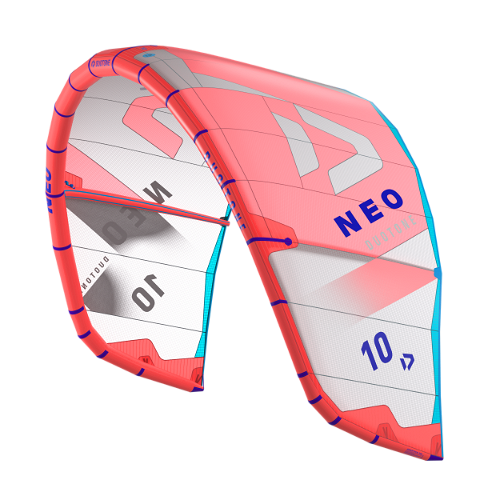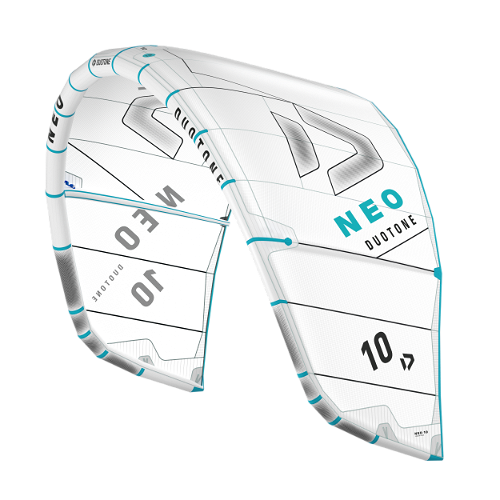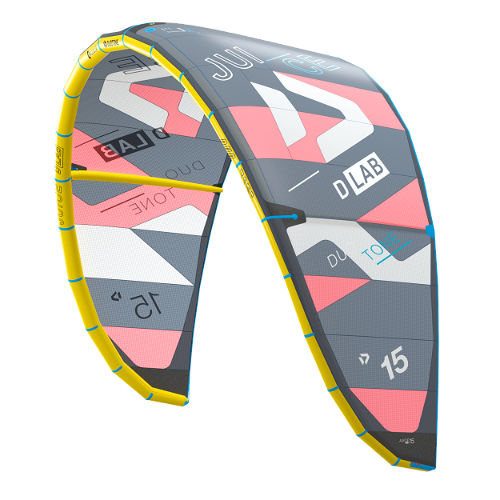Evo D/LAB
FREERIDE / FREESTYLE / WAVE
Evo SLS
FREERIDE / FREESTYLE / WAVE
Evo
FREERIDE / FREESTYLE / WAVE
Evo SLS Concept Blue
FREERIDE / FREESTYLE / WAVE
Evo Concept Blue
FREERIDE / FREESTYLE / WAVE
Rebel D/LAB
BIG AIR / HIGH PERFORMANCE FREERIDE
Rebel SLS
HIGH-PERFORMANCE FREERIDE/BIG AIR
Rebel SLS Concept Blue
HIGH-PERFORMANCE FREERIDE/BIG AIR
Juice
FREERIDE / LIGHTWIND / FOIL
Mono
FREERIDE / FOIL
Vegas Concept Blue
FREESTYLE / WAKESTYLE
Dice SLS
FREESTYLE / WAVE
Neo Concept Blue
WAVE
Juice D/LAB
FREERIDE / LIGHTWIND / FOIL
Kite Overview
Kite Overview
DUOTONE KITES
Every kite is different. Even tiny changes to a kite’s profile can have an enormous impact on its flight characteristics. Therefor there are huge differences between individual kite models. To make sure you choose the best kite to suit your style, you need to remember a few things:
WHERE ARE YOU GOING TO USE IT?
Freestyle kites are mostly used for unhooked jumps or hooked kiteloops.
Unhooked means you release the chicken loop from the harness before the jump, which is then executed without the help of the kite simply by edging the board. Unhooked jumps are usually done in wakestyle and are often combined with multiple rotations, e.g. handlepasses. For unhooked tricks the kite needs to have good pop and slack.
POP
Pop is the lift obtained without steering the kite upward. Freestyle kites really catapult the rider out of the water as soon as you edge the board.
SLACK
For unhooked jumps, it is important the kite doesn’t keep pulling too strongly during the jump phase or as soon as the rider has taken off. One reason this is important is, so the rider can pass the bar behind their back. This reduction in pressure is the so-called slack.
KITELOOPS
Kiteloops are jumps that are usually executed with smaller kites when the wind is very strong. After take-off, the kite is steered in a looped movement in front of the rider. This has the effect of further increasing your acceleration while still airborne, so you fly a long way downwind. To make sure you can steer the kite above you after the loop and in plenty of time for the kite to absorb the landing, it’s important for the kite to turn really quickly and respond well to steering.
Freestyle kites are usually C-shape kites.
Our freestyle kites:
Duotone Vegas
Duotone Dice SLS
Freeride kites are for riders who only perform hooked-in jumps, i.e. they do boosts or “old-school” tricks. Freeride kites are also great for riders who just want to cruise a bit then try out a manoeuvre or a couple of jumps every so often.
Freeride kites have the following characteristics:
HANGTIME
Kites with a long hangtime help the rider stay in the air for a really long time during jumps. This allows more time to complete tricks such as rotations or board-offs.
WINDRANGE
The windrange indicates the minimum and maximum wind speeds in which the kite can be flown. Thanks to the fact that freeride kites have such good depower, they have a large windrange. This means you can fly one kite size both when there is little wind (low end) and when there is lots of wind (top end).
UPWIND PERFORMANCE
Because you usually go a long way downwind during hooked-in jumps, it’s important to be able to fly upwind again quickly. Freeride kites let you ride a tighter angle into the wind than freestyle kites, for example.
Our freeride kites:
Duotone Rebel SLS
Duotone Evo / Duotone Evo SLS / Duotone Evo D/LAB
Duotone Juice / Duotone Juice D/LAB
This does not mean foil kites, but rather inflatable leading edge kites (ILE kites), i.e. inflatable kites that can be used in combination with a foil.
FLYING ABILITY IN LIGHT WIND
Since these kites are usually flown when there is very little wind, it is important that they are still stable and easy to control in these conditions (low end). It’s also vital that they are easy to relaunch, as this is a lot harder when there is minimal wind.
Our foil kites:
Wave kites are used in combination with surf boards to ride the waves. This requires a few very specific characteristics:
DRIFT
When riding waves with a kite, it’s possible to be moved downwind very rapidly. With a normal kite you may end up driving the kite down, causing it to stall – which means it loses pressure and plummets out of the sky. Wave kites are specially constructed so they keep flying during these kinds of manoeuvres without stalling.
TURNING DEPOWERED
With wave kites you don’t always want the kite to pull the rider too strongly, which is why the kite is often depowered. You also ride with lots of turns (top turn, bottom turn). The kite needs to be highly responsive and turn quickly during these manoeuvres. Wave kites are able to respond and turn quickly even when completely depowered.
Our wave kites:
Beginners have highly specific requirements in terms of their equipment. They need a kite which is very forgiving of any errors and which will still be fit for purpose as the rider becomes more advanced. Ideally, the right kite should be able to support the rider from their first test rides through to their first jumps. This means the following characteristics are important:
EASY RELAUNCH
Beginners, who are less skilled at steering, are particularly prone to inadvertently crashing the kite into the water. To make sure they can get practising again quickly and don’t get driven too far from the board, it is important that the kite is quick and easy to relaunch, in other words you must be able to get the kite out of the water quickly and easily.
STABILITY IN AIR
Less experienced riders don’t always give the kite their full attention; they may be focused instead on their board or the next wave they are about to ride. This can result in steering errors or rather unusual manoeuvres. So it’s important for the kite to be stable during flight, not stalling and crashing at the slightest problem.
Our entry kites:
WHAT SIZE SHOULD MY KITE BE?
It’s impossible to give a general answer to this question. Heavier riders need larger kites than lighter riders; if you use a large board you will need a smaller kite than if you use a small board. Also some kiters like to ride fully powered up so they can jump as high as possible, while other kiters just want to cruise or play in the waves and don’t want their kite to have such a strong pull.
In general, most conditions can be handled with about 3 kites and a single board. It’s important to know where you will be kiting when choosing the size of your kites. There are spots where the wind is usually strong. Here you will naturally need rather smaller kites. But if you tend to ride in a location with less wind, you will need somewhat larger kites.
You also need to be aware that every kite has a different windrange. And some kites have more drive than others. We provide a windrange table and kite-size finder for every kite to give you a rough idea of the properties of each kite.
HOW IS A KITE BUILT?
The shape of a kite has an immense influence on its flight properties. Below we describe the most popular kite shapes, but in reality it’s common for these shapes to be modified or used in combination.
C-SHAPE
These kites look like a “C” from the front and the wingtips are completely square. C-shape kites usually have five struts and a loaded 5th line. So, for example, the Duotone Dice is akin to a C-shape.
C-shape kites are good for aggressive, quick jumps and unhooked tricks. They turn very quickly but have a smaller windrange and less depower.
DELTA SHAPE
Delta Shape kites look like a “D” from the front, they are rather flatter in shape than C-shape kites. They have a low aspect ratio and the wingtips are angled backwards.
Delta Shape kites have an incomparable upwind performance and are very user friendly. They have a large windrange and are very easy to launch thanks to the curved wingtips. Delta Shape kites are ideal for freeriding, for minimal wind or for waves because they allow the rider to completely depower the kite by pushing the bar out.
FLAT SHAPE
The Duotone Rebel is THE archetypal flat shape kite. As the name suggests, this kite is not as curved as the other shapes.
This ensures a long hangtime and high jumps, exceptional upwind performance and a very accessible sheet and go power development.
The leading edge is the very front edge of the kite and usually describes the large inflatable tube on the kite. The leading edge is what primarily determines the shape of the kite.
Kites can have different numbers of struts. The fewer the struts, the easier the kite will be to turn. Kites with more struts have greater stability in the air, which gives them a larger windrange. However, this also makes the kite heavier.
SINGLE STRUT
Kites with just a single strut, such as the Duotone Mono, offer outstanding performance in light winds and are also great for cruising. Thanks to its low weight, this kite will get you up and running before anyone else if there isn’t much wind.
THREE STRUTS
For several years, kites with three struts have been becoming increasingly popular, whether it’s for freestyle or wave kites. Thanks to the reduced weight, these kites also offer good performance in light winds, while still ensuring a direct and precise feel thanks to the robust kite profile. They turn very quickly and the bar feels predictable and highly responsive.
FIVE STRUTS
Five struts has been the classic kite construction since the sport began. It is the key to massive depower, hangtime and smoothness, even in extremely gusty conditions. The kite continues to respond quickly to steering input, even when completely depowered.
The 5th line runs between the two power lines and is attached to the centre of the kite leading edge. Apart from the Duotone Vegas, the 5th line is an optional accessory on all our kites. A distinction is made between “unloaded” and “loaded” 5th lines.
The additional 5th line adds an extra level of safety as the kite completely stops pulling the rider once the quick release is triggered. The 5th line also makes it much easier to relaunch large kites when there is little wind. However, it is possible for inexperienced riders to pull too strongly on the 5th line when relaunching the kite, which causes the kite to invert.
Bridles are lines which are used to connect the power lines on the bar with the kite. They are usually subdivided into several lines to ensure an even power distribution across the kite. Sometimes bridles also have pulleys. These are movable castors on the bridles that influence the kite’s steering behaviour.
SLS stands for "Strong, Light, Superior". SLS products are made using advanced materials and production processes to guarantee optimum performance. There are no compromises with these products. They are especially developed for advanced riders who want to explore their limits and so need the very best equipment. SLS products guarantee a completely new riding experience, quite unlike anything else.
D/LAB stands for "Duotone Laboratory". As the name suggests, this is where completely new materials, production techniques and construction methods are developed. D/LAB products push the limits in terms of what was previously thought feasible or conceivable, setting new standards in the kite industry. These new technologies appear to defy the laws of physics. D/LAB products are genuinely the pinnacle of engineering prowess and will usher in long-term changes in kite sports.
You can fly lots of kites with lots of bars. Nonetheless, it is difficult to produce an exact list because every year there is the potential for each manufacturer to modify something in terms of their line coordination. To guarantee maximum comfort and safety, it is recommended that kites are always used with a bar produced by the same manufacturer.
HOW DOES A KITE FLY?
A kite flies in exactly the same way as an aircraft, thanks to its airflow profile (airfoil).
A kite flies when its lift is identical to its weight and it starts to pull as soon as the lift is higher.
As air flows over the aerodynamic profile, its speed changes. It is slower at the front edge and fastest at the widest section of the profile. The airflow decelerates until it reaches a speed of 0 at the rear edge.
With a symmetrical profile and no angle of attack, air flows over the upper and lower surfaces at an equal rate because there is no pressure differential. This means the aerodynamic profile doesn’t generate any lift.
If you now increase the angle between the airflow and the profile (the angle of attack), this causes a difference in pressure between the two sides. The overall lift is the lift for the upper side minus the lift for the lower side.
AIR DENSITY
A kite flown at the same wind speed but with different air density will pull differently. If air with more particles (cold air) hits the kite, this will produce more lift.
SURFACE AREA
The larger the surface area, the greater the lift and pull.
SPEED
Higher wind speeds or flight speeds produce greater lift.
ASPECT RATIO
The larger the ratio, the greater the lift.
ANGLE OF ATTACK
Depends on the relevant aerodynamic profile.
The ratio of surface area to length is known as the kite’s aspect ratio. Kites with a high aspect ratio can fly more quickly, are closer to the edge of the wind window and offer better hangtime. Kites with a low aspect ratio are easier to fly, quicker to relaunch and are more stable in the air in gusty conditions.
You can calculate a kite’s aspect ratio by taking its wingspan in square metres and dividing it by the kite’s area.
:grayscale(false):quality(10):blur(20))
You can use the angle of attack to influence the kite’s power. But if you choose too big an angle of attack, this can disrupt the airflow between the upper and lower surface or cause turbulence to be created behind the kite. This results in so-called backstalling. For this reason, you should generally avoid pulling the bar right in towards you and keep to the pressure point instead, usually in the middle of the depower range.
:grayscale(false):quality(10):blur(20))
WHERE CAN I GET SPARE PARTS FOR MY KITE?
Now and then it’s possible for the bladder on a tube to tear, or a hole may develop in the kite fabric itself. Spare parts can be purchased in lots of kite shops or from the Duotone online shop.
:grayscale(false):quality(10):blur(20))
:grayscale(false):quality(10):blur(20))
:grayscale(false):quality(10):blur(20))











































:grayscale(false):quality(10):blur(20))
:grayscale(false):quality(10):blur(20))
:grayscale(false):quality(10):blur(20))
:grayscale(false):quality(10):blur(20))
:grayscale(false):quality(10):blur(20))